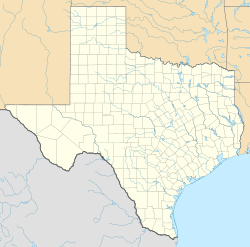1884 Houston Cotton Exchange Building | |
 The building's exterior in 2012 | |
| Location | 202 Travis St., Houston, Texas |
|---|---|
| Coordinates | 29°45′49″N95°21′41″W / 29.7635°N 95.3613°W |
| Area | 0.2 acres (0.081 ha) |
| Built | 1884 |
| Architect | Eugene Heiner |
| Architectural style | Renaissance, Romanesque |
| NRHP reference No. | 71000938 [1] |
| RTHL No. | 10693 |
| Significant dates | |
| Added to NRHP | May 6, 1971 |
| Designated RTHL | 1974 |
The Cotton Exchange Building is a historic building located in Downtown Houston.







